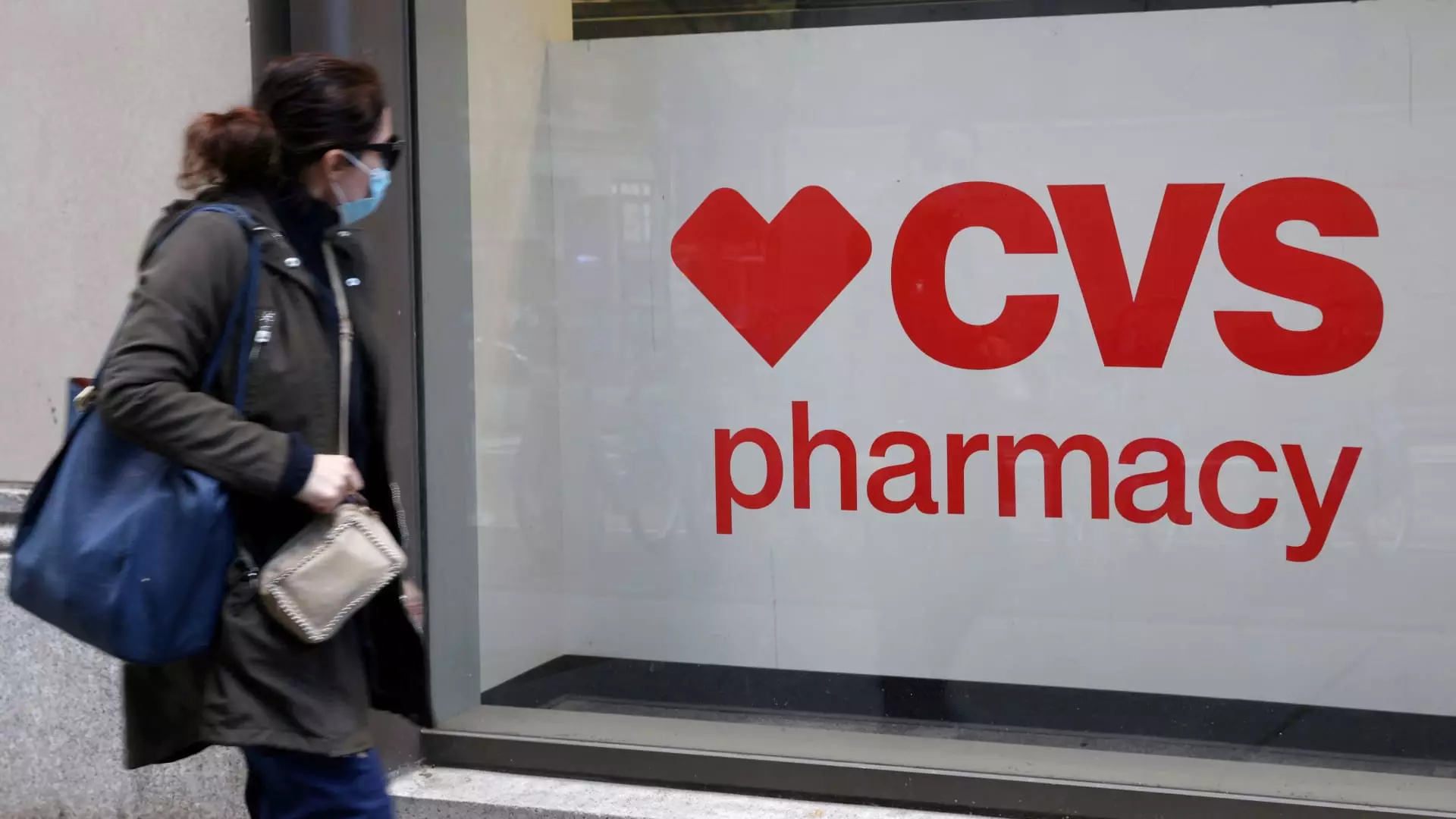The latest earnings report from CVS Health has ignited discussions on Wall Street, as the retail pharmacy giant faces significant hurdles amidst a tumultuous healthcare landscape. CEO David Joyner now finds himself at the forefront of a complex situation during his first earnings presentation since taking over the reins, with the company’s mixed third-quarter results shedding light on the organization’s operational difficulties and strategic pivots.
CVS Health released its third-quarter financial performance on Wednesday, revealing both strengths and weaknesses in a performance marred by rising medical costs. The company reported a net income of $71 million, translating to a mere $0.07 per share, a stark contrast to the robust $2.27 billion or $1.75 per share earned during the same quarter last year. While revenue showed a promising increase, reaching $95.43 billion, surpassing expectations by nearly $3 billion, the underlying costs were a major concern.
The company’s adjusted earnings per share were disappointing as they came in at $1.09, missing analysts’ expectations of $1.51. This discrepancy points to the pressures exerted by the rising costs of healthcare delivery, particularly within its Aetna division, which specializes in health insurance. As more seniors return to hospitals for previously postponed treatments, CVS must grapple with the repercussions of a growing number of claims.
The pressures stemming from increased medical expenses are expected to persist, prompting CVS executives to refrain from offering any formal earnings guidance for the remainder of the year. This cautious approach is indicative of the uncertainty enveloping the company as Joyner steps into his new role. During a statement, he emphasized the need to cultivate credibility and trust with investors, stating, “Any guidance we provide should be achievable, with clear opportunities for outperformance.” This focus on realistic projections will be vital as CVS navigates a landscape beset by financial volatility.
A key financial highlight is CVS’s insurance sector, which projected revenues of $33 billion for the quarter, marking a striking 25% increase from the previous year. However, the division is also grappling with a substantial adjusted operating loss of $924 million, showcasing the duality of growth and struggle that characterizes CVS Health’s current standing.
In light of the pressing challenges, CVS has undertaken a substantial leadership reshuffle, aiming to stabilize its operations while driving performance improvements. Joyner appointed former UnitedHealthcare CEO Steve Nelson as the new president of Aetna, tasking him with the crucial responsibility of strategizing a turnaround. This leadership aim is underscored by long-standing executive Prem Shah taking an expansive role, encompassing CVS’s retail pharmacy, pharmacy benefits, and healthcare delivery sectors.
Simultaneously, CVS is actively engaging in cost-reduction strategies to alleviate its financial burdens. This includes a plan to eliminate an additional 3,000 jobs and closures of 271 retail outlets, following a strategic review meant to reshape the company’s future trajectory. Notably, CVS aims to trim expenses by $2 billion across multiple years, illustrating a long-term commitment to reinvigorating its operations.
The company’s decision to withhold a formal earnings outlook could amplify market anxieties in the context of a historical drop in share value—nearly 27% this year alone. Investor sentiment is precarious, exacerbated by constant reductions in revenue guidance, leading to pressure from activist stakeholders who are pushing for reforms.
Despite the daunting current conditions, early indicators from pre-market trading suggest a degree of optimism surrounding CVS’s revised leadership and strategic initiatives. Shares surged by more than 10% following the earnings announcement, signaling that market players may perceive the changes as positive steps toward stabilizing the company’s trajectory amid adversity.
As CVS Health contends with elevated medical costs and adjusting the leadership mantle, the prospects for recovery hinge upon the effectiveness of its restructuring initiatives and the management of its healthcare services. The challenges faced are emblematic of broader trends affecting the healthcare industry, necessitating a nuanced approach to restore investor confidence. How CVS navigates this critical juncture will be central to its performance in the months ahead, illustrating the interconnectedness of leadership, strategy, and market response in the dynamic world of healthcare.

